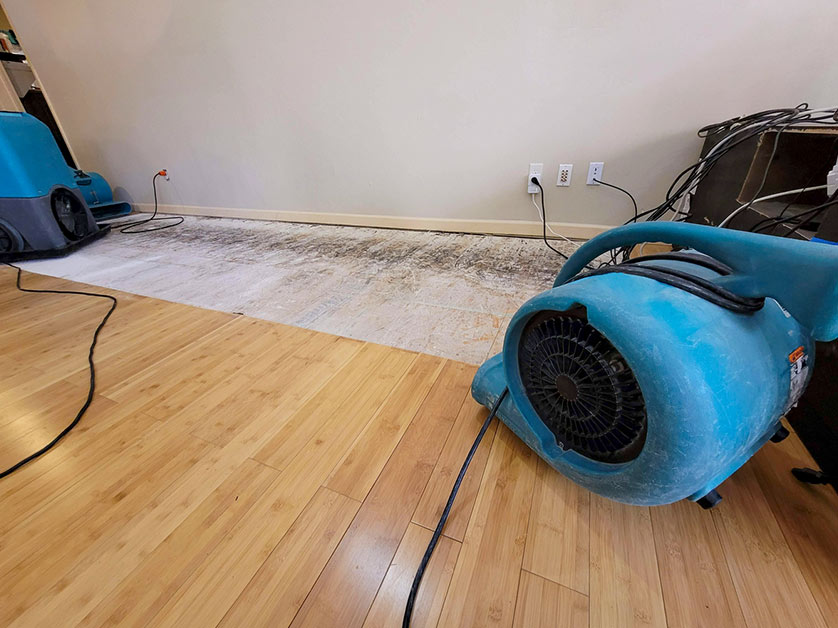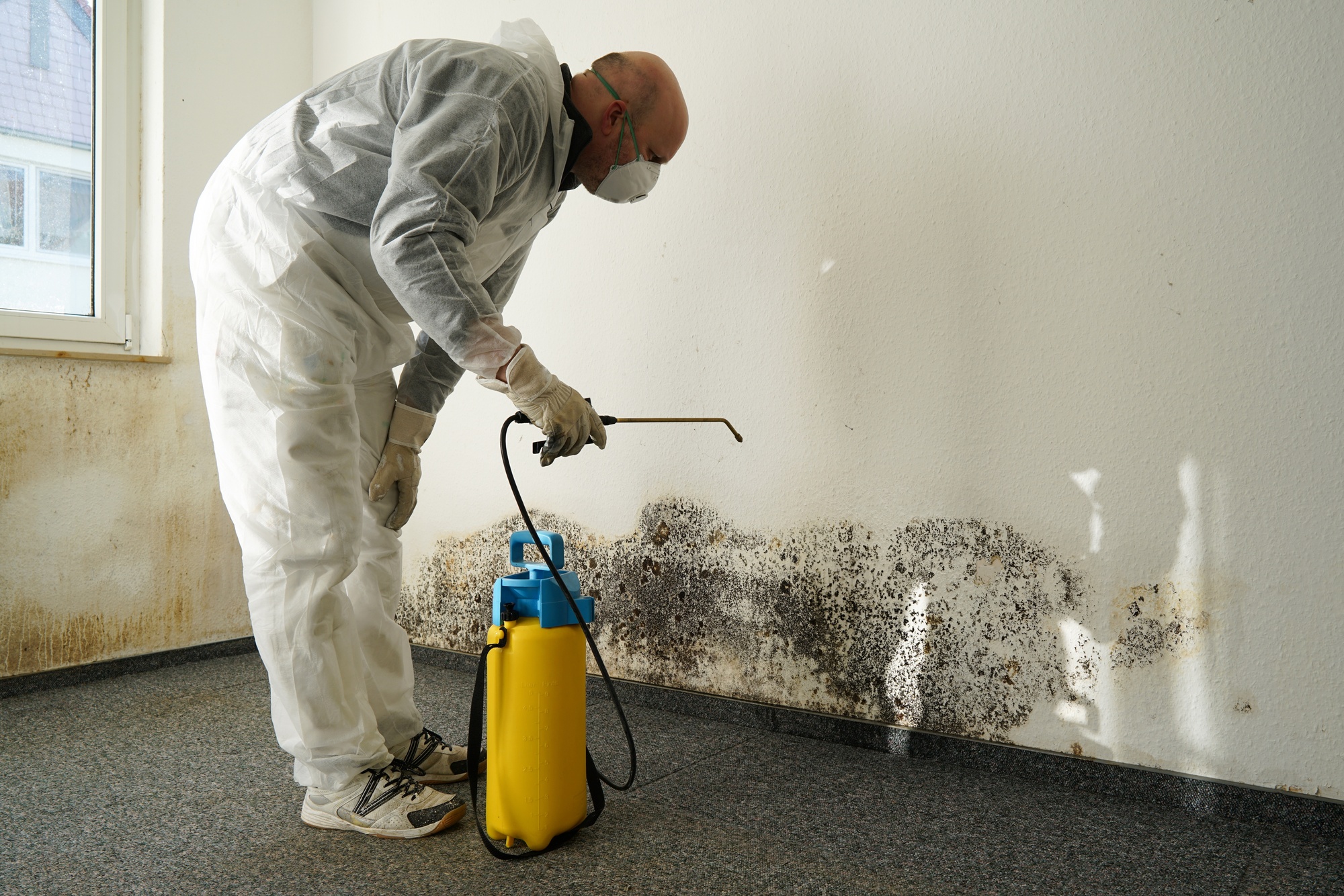Water Damage Restoration 101: Understanding the Process and Price
Water damage can strike all of a sudden, leaving home owners in a state of complication. Comprehending the reconstruction procedure is necessary for effective recuperation. From evaluating the damage to selecting the best solution provider, each action affects the general result and cost. Elements such as the sort of water damage and necessity additionally play a substantial role. What are the certain methods used in remediation, and exactly how can one plan for prospective expenses?
Kinds Of Water Damage

First Assessment and Examination

Water Removal Strategies
Following the preliminary assessment, effective water extraction techniques are utilized to alleviate damage and stop additional problems. These techniques involve using specific tools such as industrial-grade vacuums and completely submersible pumps - Water Damage Restoration. The option of approach relies on the volume of water existing and the sort of materials influenced. For standing water, submersible pumps are normally made use of for rapid removal, while vacuum cleaners are optimal for extracting water from carpets and upholstery. In addition, progressed methods like water extraction mats might be employed for hard-to-reach areas - Water Damage Restoration. The goal is to eliminate as much water as feasible, decreasing the potential for mold and mildew development and architectural damage. Prompt and reliable water removal is crucial in the total water damage remediation process
Drying Out and Dehumidification Process
Once the water extraction is complete, the drying out and dehumidification process becomes important to recovering the damaged area. This phase usually uses industrial-grade dehumidifiers and air moving companies to effectively decrease wetness levels. The dehumidifiers attract moist air, getting rid of excess moisture, while air moving companies flow air to speed up evaporation. Surveillance tools is commonly used to track moisture and temperature level degrees, ensuring excellent drying out problems. The period of this process can differ depending upon the degree of the water damage and ecological aspects. It is vital to completely completely dry all influenced materials, consisting of wall surfaces, flooring, and home furnishings, to prevent mold growth and structural damage. Appropriate execution of this step is critical for a successful restoration result.
Cleaning and Sterilizing Affected Locations
A comprehensive first assessment and inspection of influenced areas is important to determine contamination levels when the drying procedure is full. Flood Cleanup Services. Efficient cleansing strategies and appropriate products must then be utilized to remove particles and spots. Finally, sanitization and sanitation techniques are important to guarantee that harmful microorganisms are removed, recovering the space to a safe condition
First Assessment and Inspection
Prior to starting any kind of repair efforts, a thorough first evaluation and evaluation of the affected areas are essential for effective cleaning and disinfecting. This procedure entails determining the extent of water damage, identifying the resource of the water breach, and examining the products impacted. Inspectors normally look for indicators of mold growth, architectural honesty problems, and damaged belongings. The evaluation likewise consists of checking moisture levels making use of customized equipment to assure no hidden water pockets continue to be, as these can bring about additional problems. Documenting the findings is crucial for intending the following action in the repair process. A comprehensive initial assessment enables remediation professionals to devise a targeted method for reliable cleansing and sanitizing, ultimately reducing damage and health risks.
Cleaning Up Techniques and Products
Efficient cleansing and disinfecting of water-damaged areas call for a selection of methods and products customized to the particular products influenced. For permeable surfaces like drywall and carpets, removal techniques are important to eliminate excess moisture, followed by deep cleansing with specialized detergents. Non-porous products such as tile or metal can be cleaned up making use of commercial-grade cleansers that effectively eliminate impurities. Heavy steam cleaning is one more reliable technique, particularly for carpetings and furniture, as it uses heats to eliminate bacteria and mold (Water Damage Restoration). Furthermore, eco-friendly products are significantly popular for their security and efficacy - Water Damage Restoration. Eventually, picking the ideal cleansing methods and items not just assures instant cleanliness yet also aids in preventing further damage and health and wellness threats connected with water breach
Sanitization and Disinfection Techniques
When addressing water damage, correct sanitization and disinfection approaches are vital to guarantee the security and wellness of the damaged atmosphere. After first cleaning, surface areas should be treated with proper disinfectants to remove virus, mold and mildew, and germs that grow in wet conditions. Common techniques consist of making use of EPA-approved chemical anti-bacterials, which can be applied via spraying or cleaning techniques. In addition, ultraviolet (UV) light systems can effectively disinfect locations by reducing the effects of microbes without severe chemicals. The selection of technique often relies on the kind of products affected and the level of contamination. Eventually, complete sanitization not only recovers a secure space however additionally assists avoid future wellness threats connected with sticking around dampness and mold and mildew development.

Fixings and Restoration Options
Examining the damage triggered by water direct exposure is essential for establishing the suitable repair work and reconstruction alternatives. Property owners might deal with numerous problems, including harmed drywall, warped floor covering, and endangered architectural aspects. Relying on the degree of the damage, repairs may entail changing areas of drywall, mounting brand-new floor covering, or reinforcing architectural beam of lights. In instances of extreme damage, full replacement of damaged products could be essential. Additionally, professional restorers commonly recommend utilizing dampness meters to analyze concealed moisture degrees prior to picking the very best program of action. It is very important to act promptly to stop mold growth and additional degeneration. Choosing the ideal options not only recovers the residential or commercial property yet additionally assures lasting safety and security and functionality.
Elements Affecting Restoration Expenses

The extent of water damage straight impacts the reconstruction costs home owners can anticipate to incur. Variables such as the source of the water, the duration of exposure, and the affected products significantly influence rates. Clean water damage from a broken pipe is typically less costly to restore compared to damage triggered by sewage. In addition, the level of contamination dictates the demand for specialized cleaning and disposal services, further boosting expenditures. Geographical area additionally plays a function, as local labor rates and schedule of repair solutions can differ. Finally, the necessity of the reaction influences costs; quicker interventions normally bring about reduce general costs by protecting against more damage. Understanding these factors is vital for house owners when estimating repair costs.
The three primary types of water damage are classified based on contamination degrees: clean water, gray water, and black water. check here A comprehensive initial analysis and evaluation are crucial steps in the water damage reconstruction procedure. For standing water, completely submersible pumps are normally used for rapid elimination, while vacuum cleaners are optimal for extracting water from carpetings and furniture. The extent of water damage straight affects the remediation costs property owners can expect to sustain. Clean water damage from a busted pipe is usually less costly to bring back contrasted to damage created by sewage.